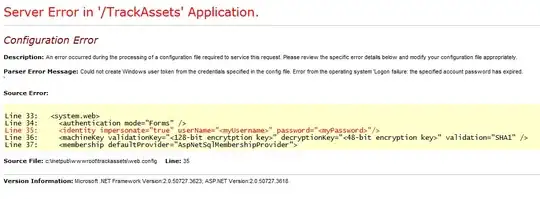My boss just made several Windows updates to our server computer last night and in doing so we can no longer access the server from within the application.
I went on the server to try and see what the problem was and I get this message.
Now I've been searching the internet all morning for solutions to a problem like this and I haven't found anything that has helped at all yet.
I tried making a new certificate on the localhost machine (server) hoping that the updated just messed up the certificate, which is why it doesn't approve of my authentication, however that didn't work.
The localhost machine is running IIS 5.1 on Windows XP Professional SP3.
Before the updates we had the .Net Framework 2.0 and after the updates we now have the .NET Framework 4.0 Client Profile with several security updates for both the .Net Framework 4.0 and Windows XP itself. There was an update for the Root Certificates and Visual Studio 2005 has been updated to Service Pack 1.
My questions are:
- Has anyone every encountered this problem beforehand? If so, what was you solution?
- It seems that the updates are the only reason why we can connect anymore, any ideas on which update broke everything and how to fix it?
